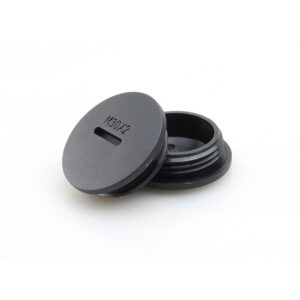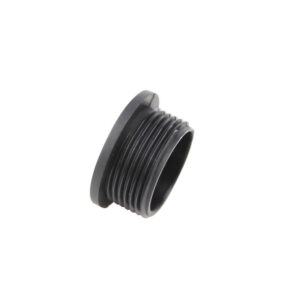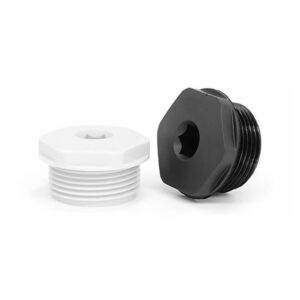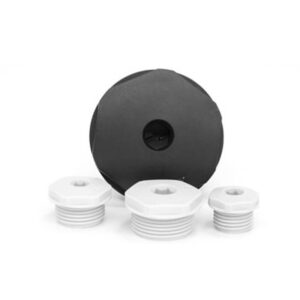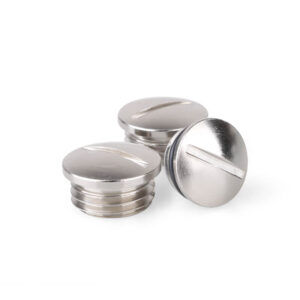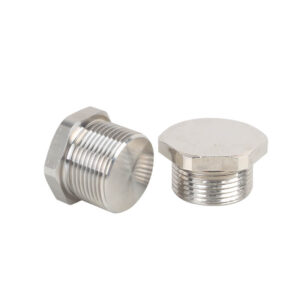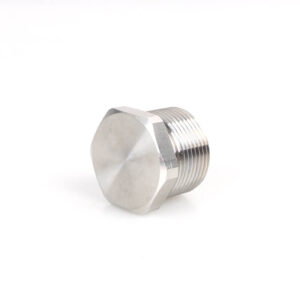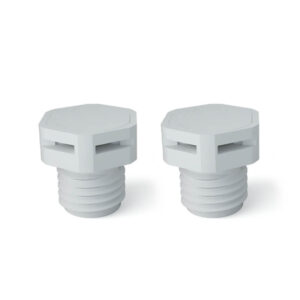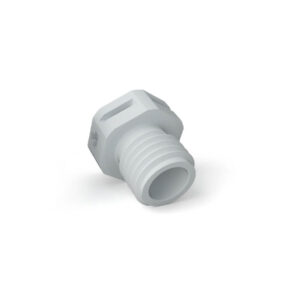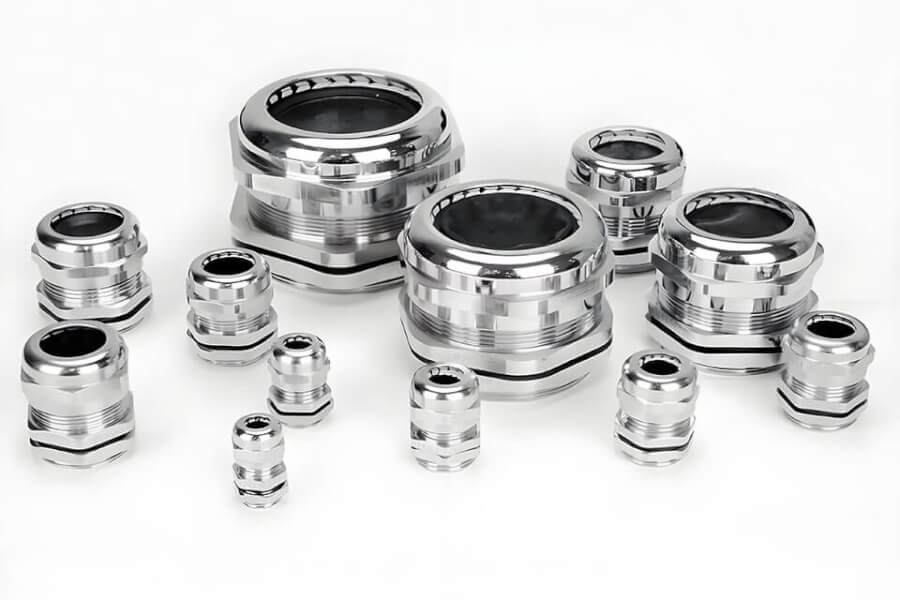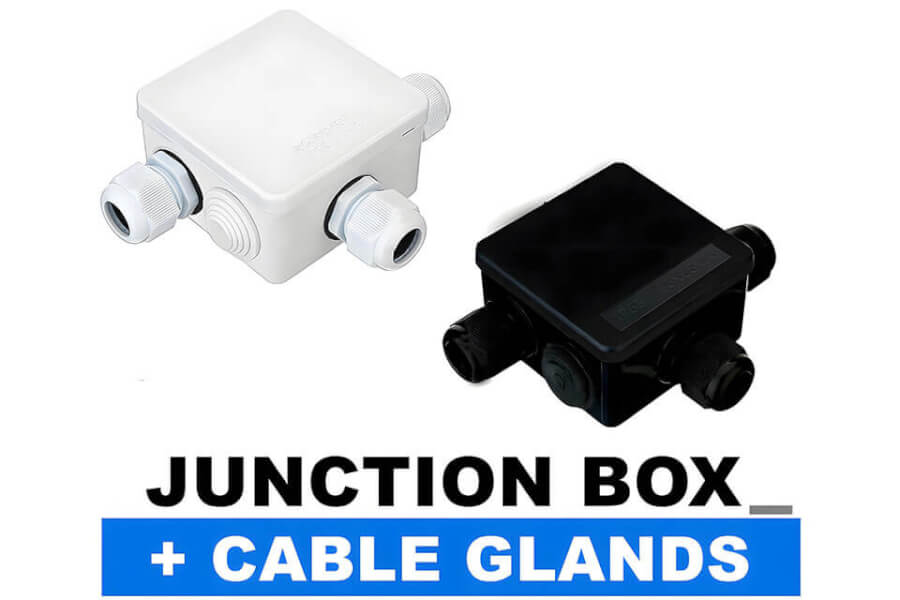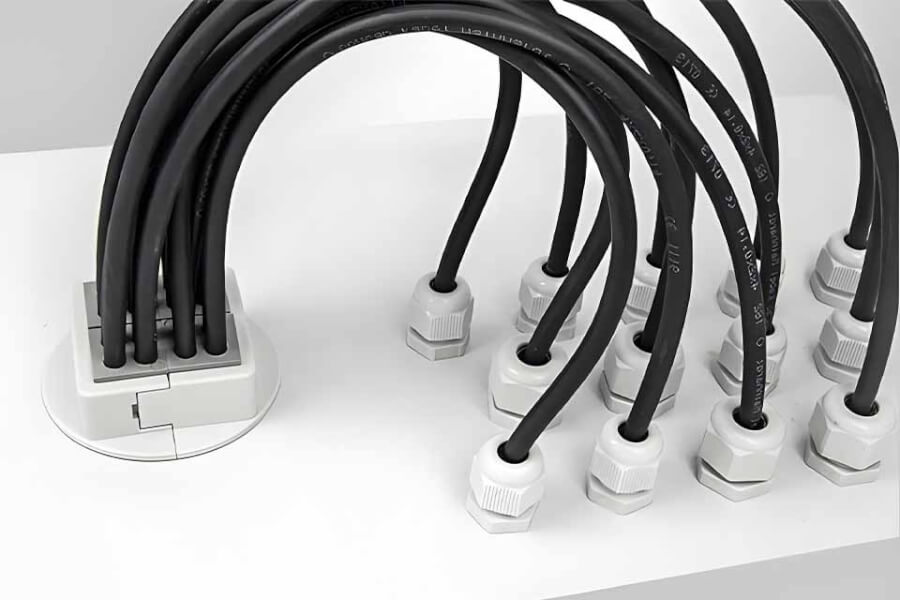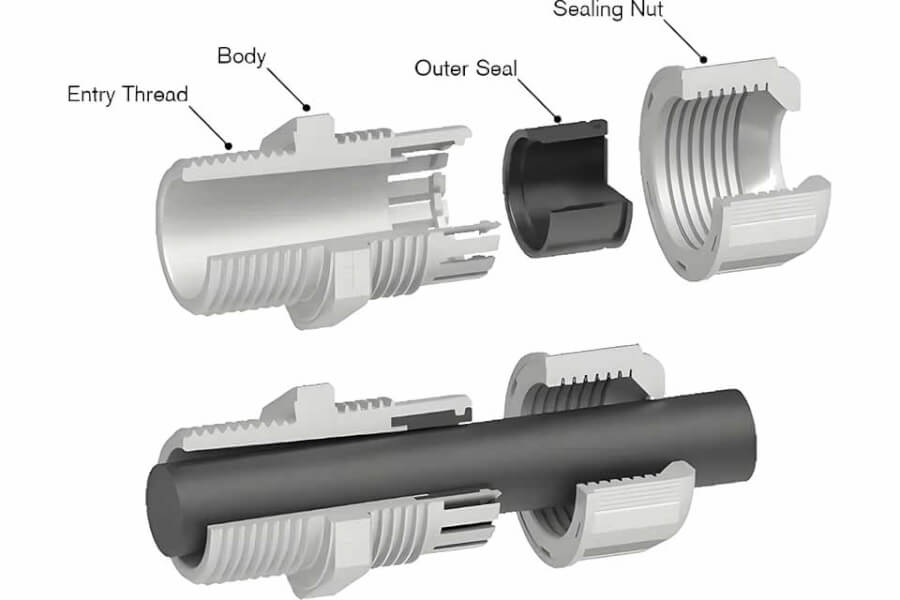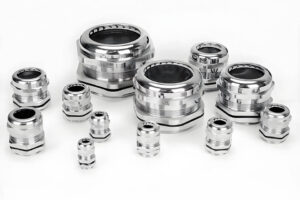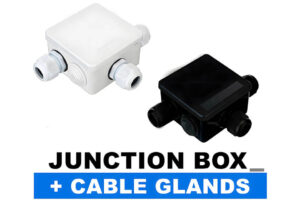Table of Contents
What is an M20 Cable Gland Size? Your Easy Guide!
What is a Cable Gland? Why Do You Need One?
Imagine you have a wire. Like the wire for your TV or computer. Sometimes, this wire needs to go inside a box. Maybe a metal box or a plastic box. This box keeps important parts safe.
Problem: But how does the wire get inside the box safely? You can’t just drill a hole! If you make a hole, bad things can happen. Dust can get in. Water can splash in. The wire might get pulled out or damaged! This is a big problem.
Agitate: Think about it. If dust gets inside, the parts can stop working. If water gets in, zap! Things can break. It can be very dangerous. Machines stop. Work stops. Fixing it costs money. It makes people sad and stressed. A simple hole is not safe for your wires!
Solution: This is where a cable gland comes in! A cable gland is like a special door for your wire. It lets the wire go into the box but seals the hole tight! It holds the wire so it does not get pulled. It keeps dust out. It keeps water out. It keeps everything safe and working!
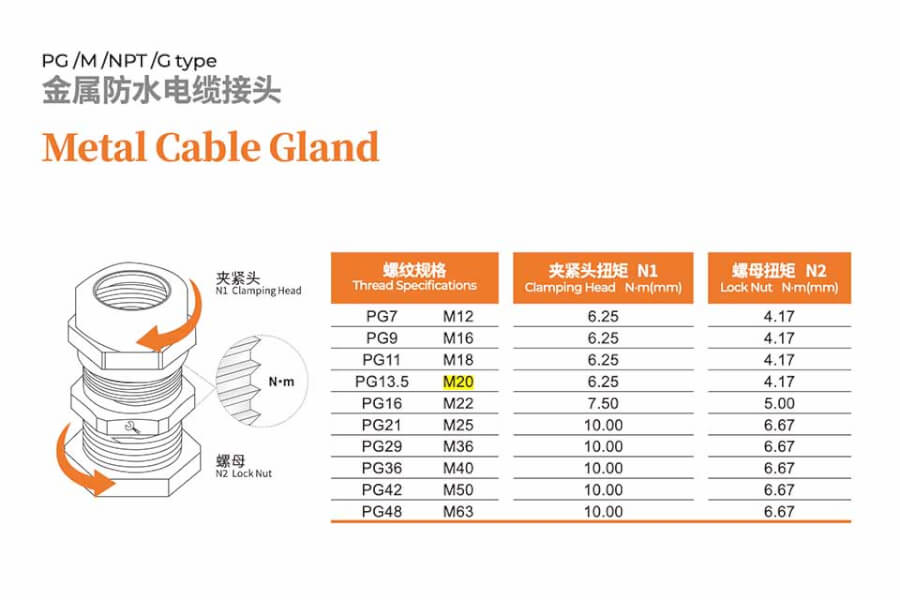
We are a cable gland maker in China. We make very good cable glands to solve this big problem for you. We want to keep your wires and machines safe!
Introducing the M20 Cable Gland
There are many sizes of cable glands. Just like shoes come in different sizes, cable glands do too! One very common size is called M20.
What does M20 mean?
- M stands for Metric. This is a way to measure things, used in most parts of the world.
- 20 means the size of the hole it fits into. It’s about 20 millimeters wide. That’s about the width of your thumb!
M20 cable glands are used everywhere!
- In machines in factories.
- On boats and ships near the water.
- In special places where safety is super important, like where there might be gas [7].
- In boxes that control lights or power.
Problem: Using the wrong size gland is like wearing shoes that are too big or too small. If it’s too small, the wire won’t fit. If it’s too big, it will be loose. Dust and water can sneak in! This defeats the purpose of the gland.
Agitate: A loose gland means no protection! Your important machines could get wet or dusty. They could break down when you need them most. This causes delays and costs a lot to fix. It’s frustrating!
Solution: You need the right size. An M20 gland is perfect for many common wires. As a top cable gland manufacturer in China, we make M20 glands that fit perfectly. We check every single one. We make sure they seal tight to protect your important things. We offer both plastic water proof cable gland options and strong metal water proof cable gland options in the M20 size.
M20 Cable Gland Size Explained: The Details!
Okay, let’s look closer at the M20 cable gland dimensions. Knowing these helps you pick the perfect one.
- Thread Size: This is the main part. It’s M20. This means the outside screw part is 20 millimeters wide. It also has a ‘pitch’ (the space between the screw lines) of 1.5 millimeters. This helps it screw in tightly.
- Cable Size (Clamping Range): This is very important. An M20 gland doesn’t fit all wires. It fits wires within a certain thickness range.
- For normal, smooth wires (unarmoured): It can often hold wires that are 4mm to 9mm thick.
- For thicker, stronger wires with metal skin (armoured): It can often hold wires that are 7mm to 15mm thick.
- Always check the specific gland! Different M20 glands might hold slightly different sizes.
- Hole Size: To use an M20 gland, you need a hole in your box that is 20mm wide.
- Material: What is it made of?
- Plastic (Nylon): Good for many jobs, light, doesn’t rust.
- Metal (Brass or Stainless Steel): Very strong, great for tough places, lasts a long time.
Here is a simple table showing key M20 sizes:
| Feature | Details (Typical M20 Gland) | Why it Matters |
|---|---|---|
| Thread Size | M20 x 1.5 mm | Fits standard 20mm holes |
| Cable Range | 4mm – 15mm (depends on type) | Must match your wire thickness |
| Waterproof? | Yes! Usually IP68 | Keeps water and dust out |
| Spanner Size | Often needs a 26.6mm tool | For tightening the locknut |
| Made Of | Plastic (Nylon) or Metal | Choose based on job needs |
Problem: Getting confused by all these numbers is easy! If you mix up thread size or cable range, you buy the wrong part.
Agitate: Buying the wrong gland wastes time and money. Your project stops. You have to order again. Maybe the wrong gland even causes damage before you realize it! It’s a headache you don’t need.
Solution: Don’t worry! As your cable gland partner in China, we make it simple. We list the cable range clearly for all our M20 glands. We make strong plastic M20 glands and tough metal M20 glands. We can help you understand the M20 cable gland dimensions and choose the perfect fit for your wire and your box. Our goal is to make it easy for you.
How Do You Know Which M20 Gland Size You Need?
Picking the right gland is key! Here’s how:
- Measure Your Cable: Get a ruler or a special tool. Measure how thick your wire or cable is (the diameter). Let’s say your cable is 10mm thick.
- Check the Gland’s Range: Look at the M20 gland you want to buy. Does its ‘cable range’ include 10mm?
- Example: An M20 gland says “Cable Range: 6mm – 12mm”. Your 10mm cable fits! Good!
- Example: An M20 gland says “Cable Range: 10mm – 14mm”. Your 10mm cable fits! Good!
- Example: An M20 gland says “Cable Range: 4mm – 9mm”. Your 10mm cable is too thick! Don’t use this one!
- Think About Your Box: Make sure the hole in your box is M20 (20mm). If the hole is bigger, like M25, you might need an adapter (a special part to make it fit).
- Think About the Place: Is it wet? Dusty? Inside or outside? Is it a hazardous area? This helps you choose Plastic or Metal, and if you need special safety features (like ATEX approval).
Problem: Just guessing the size is a bad idea. Cables can look similar, but be different thicknesses. Relying on memory or guessing leads to mistakes.
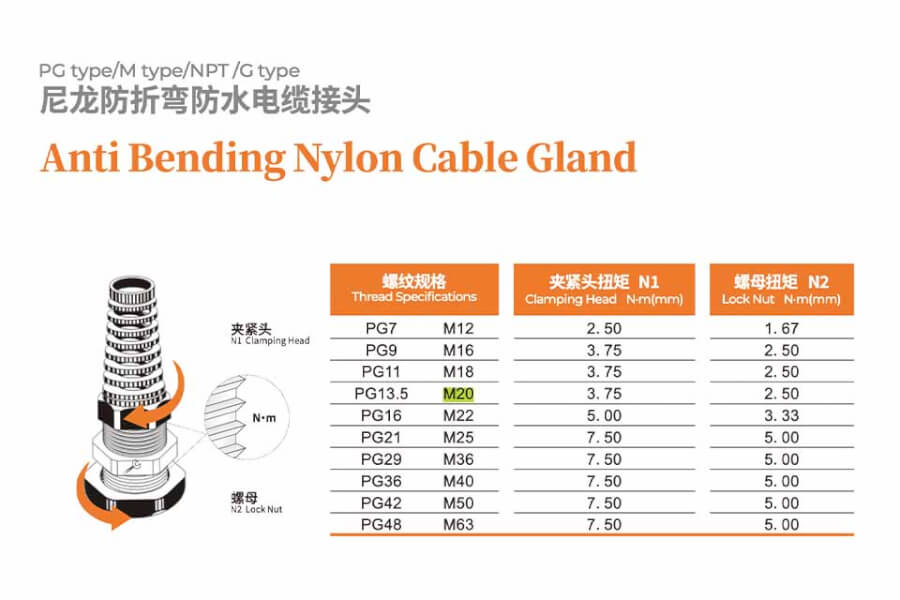
Agitate: Imagine finishing your whole project, turning it on, and then… failure! All because the gland didn’t seal right around the cable. Water got in. Dust clogged it up. All that hard work is wasted. It’s deeply frustrating and can damage your reputation.
Solution: Take the guesswork out! Measure carefully. Check the specs. And partner with a manufacturer who provides clear information. We are that manufacturer! We provide detailed M20 thread size charts and specs for all our products. Whether you need a standard plastic water proof cable gland or a heavy-duty metal water proof cable gland, we give you the exact cable range so you choose right the first time. We even make multi hole cable gland options if you need to safely run several small wires through one M20 hole!
What Makes M20 Glands Special? (Technical Stuff Made Easy!)
M20 glands have cool features:
- Super Waterproof (IP68): Most M20 glands are rated IP68. This is like a superhero shield against water and dust!
- IP means ‘Ingress Protection’ (how well it keeps stuff out).
- The 6 means TOTALLY dust-tight. No dust gets in!
- The 8 means it can go UNDERWATER and still keep water out!
- This is perfect for outdoors, wet areas, or places that get washed down.
- Strong Grip: They hold the cable tight so it can’t be pulled out easily. This stops damage.
- Different Threads: M20 is Metric. You might hear about other types like NPT (used more in America) or PG (an older type) . They are different! M20 won’t fit an NPT hole. It’s important to match the thread type. M20 is the most common worldwide.
- Safe for Risky Places: Some M20 glands are built extra safe for hazardous area cable glands use. These are places with gas or explosive dust. These glands have special marks like ‘Ex d’ or ‘Ex e’. They stop sparks!
Problem: If you don’t understand these features, you might use the wrong gland. Using a normal gland in a wet place might let water in eventually. Using a standard gland in a hazardous area is extremely dangerous.
Agitate: Using the wrong gland type can lead to disaster. Water damage is bad enough, but an explosion or fire in a hazardous area caused by the wrong part? That’s unthinkable! It risks lives and huge property damage. Compliance rules are strict for a reason!
Solution: Safety and reliability are key. We understand this! As a leading China cable gland manufacturer, we make M20 glands that meet high standards. Our waterproof M20 glands are truly IP68. We offer standard plastic and metal types. We can also provide glands certified for hazardous areas if you need them. We help you understand the differences between metric vs NPT threads so you always get the right connection. Your safety is our priority.
Where Do You Use M20 Cable Glands?
You see M20 glands in lots of places:
- Factories: Connecting wires to machines, robots, and control panels.
- Buildings: Bringing power into junction box units, lighting fixtures.
- Ships and Boats: Keeping electrical parts safe from sea water and salty air. Metal M20 glands are great here! [9]
- Outdoor Signs & Lights: Protecting connections from rain, snow, and sun.
- Solar Power: Connecting panels and equipment safely outdoors.
- Special Zones: Oil rigs, chemical plants, anywhere safety is critical (using special Ex-rated M20 glands).
Problem: Different jobs need different kinds of M20 glands. A plastic gland might be fine indoors, but maybe not best for a very hot engine or a boat deck constantly splashed by waves.
Agitate: Choosing a gland that can’t handle the heat, the wetness, or the chemicals means it will fail quickly. It might crack, leak, or corrode. Then you’re back to square one, needing to replace it, costing more time and money.
Solution: We have the M20 gland for YOUR job! Because we manufacture a wide range in China, we offer choices. Need something affordable for indoors? Our plastic waterproof M20 glands are perfect. Need something super tough for outdoors or a harsh factory? Our metal waterproof M20 glands (brass or stainless steel) are built to last. Need to run multiple wires? Check out our multi-hole M20 glands. We provide options so you get the right protection for the right price.
How to Install an M20 Cable Gland (Easy Steps!)
Putting in an M20 gland is simple if you follow the steps:
- Prepare the Hole: Make sure you have a clean 20mm hole in your box.
- Take the Gland Apart: Unscrew the top nut (cap) and take out the rubber seal and other parts. Keep them in order!
- Put the Body In: Put the main threaded body of the gland through the hole from the outside.
- Add the Locknut: From the inside of the box, screw on the thin metal or plastic nut (the locknut). Tighten it with the right size spanner (often 26.6mm for M20). Not too tight, just snug!
- Prepare the Cable: Push your cable through the top nut (cap) first, then through the other parts (like the clamp ring), and finally through the main body into the box.
- Tighten the Cap: Push the seal and other parts back into the main body. Screw the top nut (cap) back on. As you tighten it, the rubber seal squeezes the cable. This makes the waterproof seal and grips the cable. Tighten it well, but don’t crush the cable! Check the instructions for how tight (torque).
Problem: Installing it wrong can ruin the gland or not seal properly. Tightening too much can damage the cable or gland. Not tightening enough means leaks!
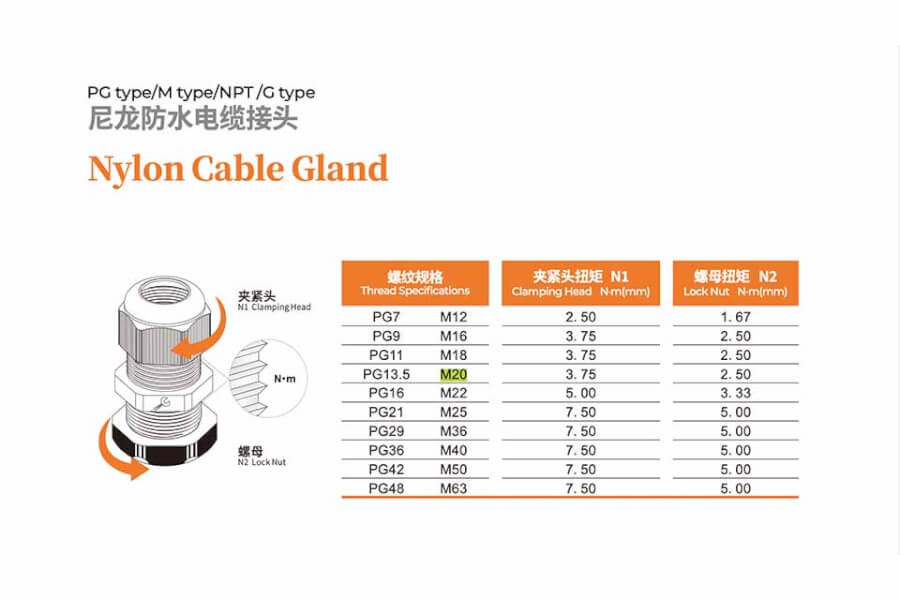
Agitate: A bad installation is like locking your door but leaving the key in it! It gives a false sense of security. A small leak you don’t see can cause big damage over time. A loose cable can get pulled and break connections. It leads to unreliable equipment.
Solution: Follow the steps! Our glands are designed for easy installation. We use quality seals that work well when tightened correctly. As your manufacturing partner, we want your project to succeed. We provide clear instructions and support if you have questions. Using our reliable M20 glands means a secure, sealed connection you can trust.
Common Mistakes to Avoid!
Watch out for these simple errors:
- Wrong Size: Trying to fit a 15mm cable into an M20 gland meant for 4-9mm. It won’t seal!
- Wrong Thread: Trying to screw an M20 (Metric) gland into an NPT hole. It won’t fit right!
- Forgetting the Seal: Leaving out the rubber seal part. Oops! No waterproof seal now.
- Not Tight Enough: The cap nut feels snug, but isn’t tight enough to squeeze the seal. Water can get in.
- Too Tight: Cranking down the cap nut so hard it damages the cable or cracks the plastic gland.
- Using Indoor Gland Outside: Using a basic plastic gland where it gets lots of sun and rain. It might break down over time.
Problem: These small mistakes seem minor, but they completely undo the protection the gland should provide.
Agitate: Each mistake leads back to the same issues: water damage, dust contamination, equipment failure, safety risks, wasted time, and wasted money. It reflects poorly on the work done.
Solution: Double-check everything! Measure the cable. Confirm the hole thread. Use all the parts. Tighten correctly. Choose the right material for the job. By partnering with us, a quality-focused cable gland manufacturer from China, you start with a reliable product designed to prevent these issues. Our waterproof M20 glands, both plastic and metal, are made to last when installed right. We focus on quality materials and design to give you peace of mind.
Your Questions Answered (FAQs)
- Can I use an M20 gland for strong cables with metal skin (armoured)? Yes! But you need a special type of M20 gland designed for armoured cable. They often have two seals. We can supply these too!
- How tight should I screw the cap nut? It depends on the gland type (plastic or metal). Check the instructions! There’s usually a recommended ‘torque’ value. Don’t just guess.
- Is M20 the only size? No! There are many metric sizes (M12, M16, M25, M32, etc.) plus NPT and PG sizes. M20 is just a very popular one.
- Are all M20 glands waterproof? Most are designed to be waterproof M20 glands (IP67 or IP68), but always check the rating (like IP68) to be sure.
Problem: Uncertainty leads to delays or buying the wrong parts.
Agitate: Feeling unsure means you might hesitate, stopping your project, or take a risk and buy something unsuitable, leading to future problems.
Solution: Ask questions! We are here to help. As experienced manufacturers, we know our products inside out. We can answer your questions about M20 glands, other sizes, waterproof ratings, or hazardous area cable glands. We want you to feel confident you have the right part for the job.
Why Choose Us as Your M20 Cable Gland Partner?
Finding the right parts can be hard. You need good quality, the right price, and a supplier you can trust.
Problem: Many suppliers offer glands, but how do you know who makes good ones? Who can deliver on time? Who understands your needs? Choosing the wrong supplier can cause big headaches.
Agitate: Imagine getting a batch of glands that crack easily, don’t seal properly, or have inconsistent sizes. Your production stops. Your customers are unhappy. Your reputation suffers. Dealing with returns and finding a new supplier costs time and money you can’t afford to lose.
Solution: Choose us! We are a dedicated cable gland manufacturer based in China with years of experience.
- We Make What You Need: We produce high-quality plastic water proof cable gland, robust metal water proof cable gland, space-saving multi hole cable gland, and reliable junction box solutions. We have the M20 size you need!
- Quality You Can Trust: We check everything carefully. Our glands are strong, seal tight (IP68), and last long.
- Great Prices: Because we manufacture ourselves, we offer competitive prices.
- We Understand: We know how important reliable connections are. We work hard to be the partner you can count on.
- Easy to Work With: We aim to make ordering simple and provide support when you need it.
Let us be your source for M20 and all other cable gland needs. We provide the quality and reliability to keep your projects running smoothly and safely.
Conclusion: M20 Glands Keep Things Safe!
So, what is M20 cable gland size? It’s a very common and useful size (20mm metric thread) for letting wires enter boxes safely.
Remember the key things:
- M20 fits a 20mm hole.
- You MUST match the gland’s cable range to your wire’s thickness.
- They keep out dust and water (look for IP68).
- Choose plastic or metal based on the job.
- Install them correctly!
Problem: Unprotected wires are a risk. Agitate: Risks lead to failures, costs, and danger. Solution: Use the right cable gland! An M20 gland is often the perfect solution. And choosing a reliable manufacturer like us ensures you get quality parts that do the job right, every time.
Explore our range of cable glands on our website or contact us today! We are ready to help you find the perfect M20 solution.
News & Blog
Discover what cable glands are, why they matter, and how the right choice protects cables, boosts safety, and ensures reliable performance in any environment.

